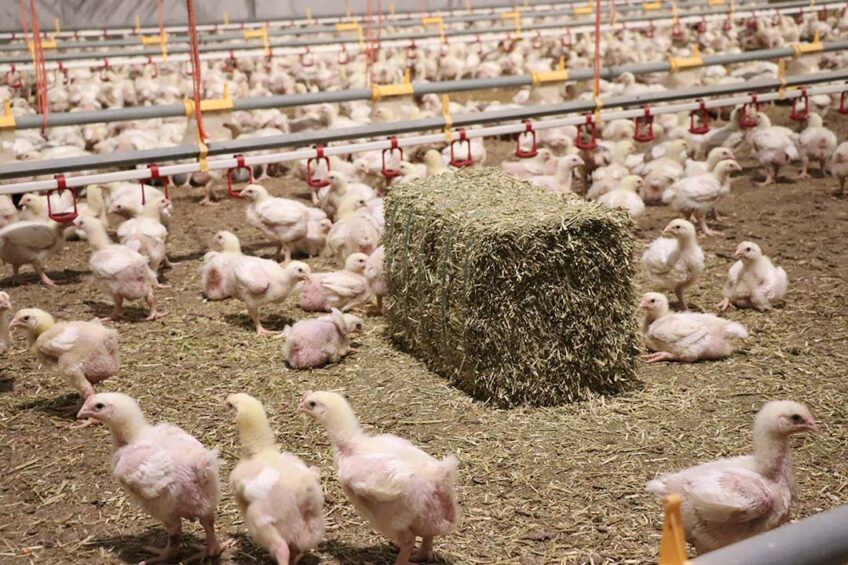From egg to chicken leg in 1 family business

The Belgian broiler integration Lisabeth in Gottem is a family business that controls the entire poultry meat supply chain. A compound feed plant, the large hatchery and broiler production form 1 operation. The family remains loyal to Ross 308 broilers, which, according to the family, still perform the best.
Around 1955, arable farmer Joris Lisabeth was looking for a way out of the flax crisis and decided to become an egg trader. A few years later he started producing eggs himself. In the 1970s he switched from laying hens to broiler breeders and started mixing the feed himself out of dissatisfaction with the quality of the feed supplied by the local compound feed company. From then on feed was also supplied on a small scale to other poultry farms in the region. Today, Lisabeth’s feed plant delivers approximately 650 tonnes of poultry feed per week.
Lisabeth also started its own hatchery in the 1970s with a capacity of 50,000 eggs per week. This made Lisabeth a real integration. Son Jan is now at the helm, while grandson Olivier is preparing to take over that role in the near future.
The broiler breeder branch was discontinued in the 1980s when the company switched entirely to broilers; 70,000 at the time. Jan: “We sometimes had Ross and sometimes Cobb broilers at that time.” Since then the company has continued to expand and innovate. In the late 1990s, a completely new hatchery was built at the Deinze location. The integration can now hatch 200,000 day-old chicks per week.
Own concept broiler: Gallux
The family now grows broilers at 4 sites. Their 15 houses in total have a combined capacity of 400,000 broiler chickens. The Wontergem site is where the 4 newest sheds built in 2017 are located, with a total of 120,000 broiler chickens. To facilitate the work, all the new houses are almost identical. The design is the same everywhere with IFH 60 kW heaters from Holland Heater, drinking water lines from Lubing and feed systems from Landmeco.
An important reason for building and furnishing the barns identically is to ensure continuity of supply to the slaughterhouse. Olivier: “This makes planning a lot easier. Loading, cleaning, disinfecting and preparing all run smoothly in a 7.5 week cycle. The most important thing is supplying processors with the same number of chickens every week.”

The Lisabeth integration has had its own broiler concept since 1995. Initially this concept was called Vitakip but since 2017 the broiler chicken has been renamed Gallux. Olivier: “A combination of Gal and Lux. Gal stands for the Gauls, the tough people who held out against the Roman rulers in ancient times; just like the Belgians, a tough folk. And Lux which, of course, represents the daylight we have in our housing system.”
With the name Gallux, the Lisabeth family also aims to emphasise the local aspect. “We think it is important to show that this product originates from our own country. Hence a logo with a chicken and the colours of our national Belgian flag.” The integration works with the slogan: ‘From egg to (chicken) leg’.
The requirements for the Gallux concept chicken are daylight, a high standard of animal welfare and perfect feed quality to achieve excellent meat quality. The stocking density is set at a maximum of 35 kg/m2. The integration has used alfalfa bales since 2021 as a welfare measure. The feed composition – a trade secret – also falls under the Gallux chicken concept.

Not interested in exporting
To ensure that the broilers are even healthier and the animals grow even better, the Lisabeth family decided to start with the Nestborn concept from the Belgian hatchery Belgabroed in 2021. This means that the chicks hatch on a farm. The family says that the chicks’ start-up is better, resulting in even less antibiotic use. The bedding material, in this case flax shives (a residual product of flax production), also remains drier which means that the broilers have less chance of foot pad lesions. Olivier: “Peat is now also widely used in Belgium. That is certainly a good product but flax shavings work even better in our case. It is also a local product, so the environmental footprint is lower than peat imported from Scandinavia.”
The family is not interested in turning its Gallux chicken into an export product. Olivier: “Export does not interest us and is not realistic either. We produce purely for the Belgian market where we market a quality product for the higher, more expensive segment.” The broilers are processed at Belki in Aalst and Nollens in Kruisem. The Gallux products are supplied to the major Belgian supermarket chains Colruyt and Ahold-Delhaize, among others. “We supply mostly to Colruyt. This is partly because Colruyt is a real family business, just like us,” says Olivier. “We adhere to the same standards, and the margins are distributed fairly.”

Starting or participating in a slaughterhouse ourselves is not an option. Father Jan explains that this has become too complex given the legislation and all the environmental regulations that have to be met. “There are no longer any small processors. Our integration is just too small to run a profitable slaughterhouse.”
The supermarkets buy about 60% of the meat. The remaining 40% finds its way through Delikip’s own warehouse and wholesale outlet to small buyers and retailers who supply restaurants, snack bars, poulterers, butchers and small shops. Olivier believes it is crucial that the company remains integrated. “You wouldn’t expect it, but our feed factory is very important. We do not produce broiler pellets but mash, a compound feed comparable to laying hen feed. This enables us to supply quality meat of the highest standard.”












